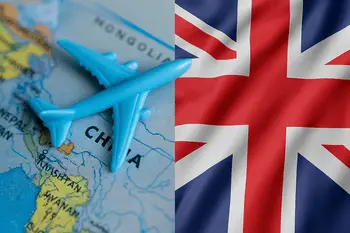
China is a vast country with diverse landscapes and bustling cities, making domestic flights a convenient and popular mode of transportation.
Whether you are traveling for business or leisure, understanding the process of taking domestic flights within China can enhance your travel experience.
This updated guide provides practical tips, addresses common challenges, and includes essential resources to help you navigate domestic air travel in China with ease.
1. Booking Domestic Flights
Booking domestic flights in China is straightforward, with several platforms and methods available to suit your preferences and budget.
Online Booking Platforms
- Ctrip (Trip.com): A popular platform offering English-language support, competitive prices, and frequent promotions.
- Qunar: Known for its extensive flight options and discounts, though it primarily caters to Chinese speakers.
- Fliggy: Alibaba’s travel platform, offering deals and loyalty points for frequent users.
Tip: If you’re a foreign traveler, platforms like Trip.com are more user-friendly as they support international credit cards and provide English interfaces.
Airline Websites
Booking directly through airline websites, such as Air China, China Eastern Airlines, or China Southern Airlines, can offer additional benefits like loyalty points and exclusive deals.
Travel Agencies
If you prefer assistance, consider using a travel agency. Agencies can help you find the best deals and provide additional services, such as hotel bookings and tour packages.
2. Choosing the Right Flight
Selecting the right flight is key to a comfortable and convenient journey. Consider the following factors:
- Flight Duration and Schedule: Early morning and late-night flights may be cheaper but less convenient. Choose a flight that fits your schedule and minimizes travel time.
- Airport Location: Major cities like Beijing, Shanghai, and Guangzhou have multiple airports. Research which airport is closer to your destination to save time.
- Airline Reputation: Check reviews and ratings for airlines to assess their safety, service, and punctuality.
- Cabin Class: Depending on your budget, you can choose between economy, premium economy, business, and first class. Higher cabin classes offer more comfort and amenities.
Tip: Use platforms like Skytrax to compare airline ratings and reviews.
3. Preparing for Your Flight
Proper preparation ensures a smooth and stress-free travel experience.
Check-In Process
- Most airlines offer online check-in 24 to 48 hours before departure. This allows you to select your seat and receive your boarding pass electronically.
- Alternatively, you can check in at the airport counter or use self-service kiosks.
Baggage Allowance
- Familiarize yourself with the airline’s baggage policies, including weight and size limits for both checked and carry-on luggage.
- Exceeding the allowance may result in additional fees.
Travel Documents
- Foreign travelers must carry their passports and valid visas. Ensure your passport is valid for at least six months.
- Chinese nationals use their ID cards for domestic flights.
Arrival at the Airport
- Arrive at the airport at least two hours before departure to allow time for check-in, security checks, and boarding.
4. Navigating the Airport
Navigating airports in China can be straightforward with the right preparation.
Airport Signage
- Most major airports have clear signage in both Chinese and English. Follow the signs to find check-in counters, security checkpoints, boarding gates, and baggage claim areas.
Security Checks
- Be prepared for thorough security checks, including screening of carry-on luggage and a personal security scan.
- Liquids must be in containers of 100ml or less and placed in a clear plastic bag.
Airport Facilities
- Take advantage of airport facilities such as lounges, dining options, and duty-free shops.
- Many airports offer free Wi-Fi, charging stations, and relaxation areas.
Tip: Download the app for your departure or arrival airport (e.g., Beijing Capital International Airport or Shanghai Pudong International Airport) for maps and real-time updates.
5. In-Flight Experience
Enhance your in-flight experience with these tips:
- Comfort and Entertainment: Wear comfortable clothing and bring essentials like a neck pillow, earplugs, and an eye mask. Many airlines offer in-flight entertainment, so bring headphones.
- Food and Beverage: Depending on the flight duration, airlines may provide meals, snacks, and beverages. Check the airline’s website for details or bring your own snacks (adhering to security regulations).
- Health and Safety: Stay hydrated by drinking water regularly and avoid excessive alcohol. Follow the airline’s health and safety guidelines.
6. Arriving at Your Destination
Upon arrival, follow these steps for a smooth transition:
Disembarkation
- Follow the cabin crew’s instructions for disembarkation. Gather all your belongings and proceed to the baggage claim area to retrieve your checked luggage.
Transportation Options
- Major airports offer various transportation options, including taxis, airport shuttles, buses, and metro services.
- Research and plan your transportation in advance to avoid inconvenience.
Accommodation Check-In
- If you have booked accommodation, confirm the check-in process and any specific requirements. Some hotels may offer airport transfer services for added convenience.
7. Tips for a Hassle-Free Experience
Stay Informed
- Keep an eye on flight status updates through the airline’s website or mobile app. Weather conditions and other factors may cause delays or cancellations.
Language Barrier
- While many airport staff and airline crew speak English, learning a few basic Mandarin phrases can be helpful. Use translation apps like Google Translate or Pleco for effective communication.
Travel Insurance
- Consider purchasing travel insurance that covers flight cancellations, delays, and medical emergencies. This provides peace of mind and financial protection during your travels.
8. Comparing Flights to High-Speed Trains
For certain routes, high-speed trains may be a better option than flights.
Advantages of High-Speed Trains
- Convenience: Train stations are often located in city centers, unlike airports.
- Punctuality: Trains are less likely to be delayed compared to flights.
- Cost: Train tickets are often cheaper than flights, especially for short distances.
Example Routes:
- Beijing to Shanghai: High-speed trains take about 4.5 hours, compared to a 2-hour flight plus airport transfers.
- Guangzhou to Shenzhen: A high-speed train takes just 30 minutes.
For train bookings, use platforms like 12306 China Railway or Trip.com.
9. Environmental Considerations
Domestic flights have a higher environmental impact compared to trains.
If you choose to fly, consider offsetting your carbon emissions through programs like Carbonfund or Gold Standard.
Conclusion: Enjoying Domestic Air Travel in China
Taking domestic flights within China is a convenient and efficient way to explore the country’s diverse regions and cities.
By understanding the booking process, preparing adequately, and following these tips, you can ensure a smooth and enjoyable travel experience.
Whether you’re visiting historical landmarks, vibrant cities, or picturesque landscapes, domestic air travel opens up a world of possibilities in China.
For more information, visit resources like Trip.com, Air China, or Beijing Capital International Airport.


